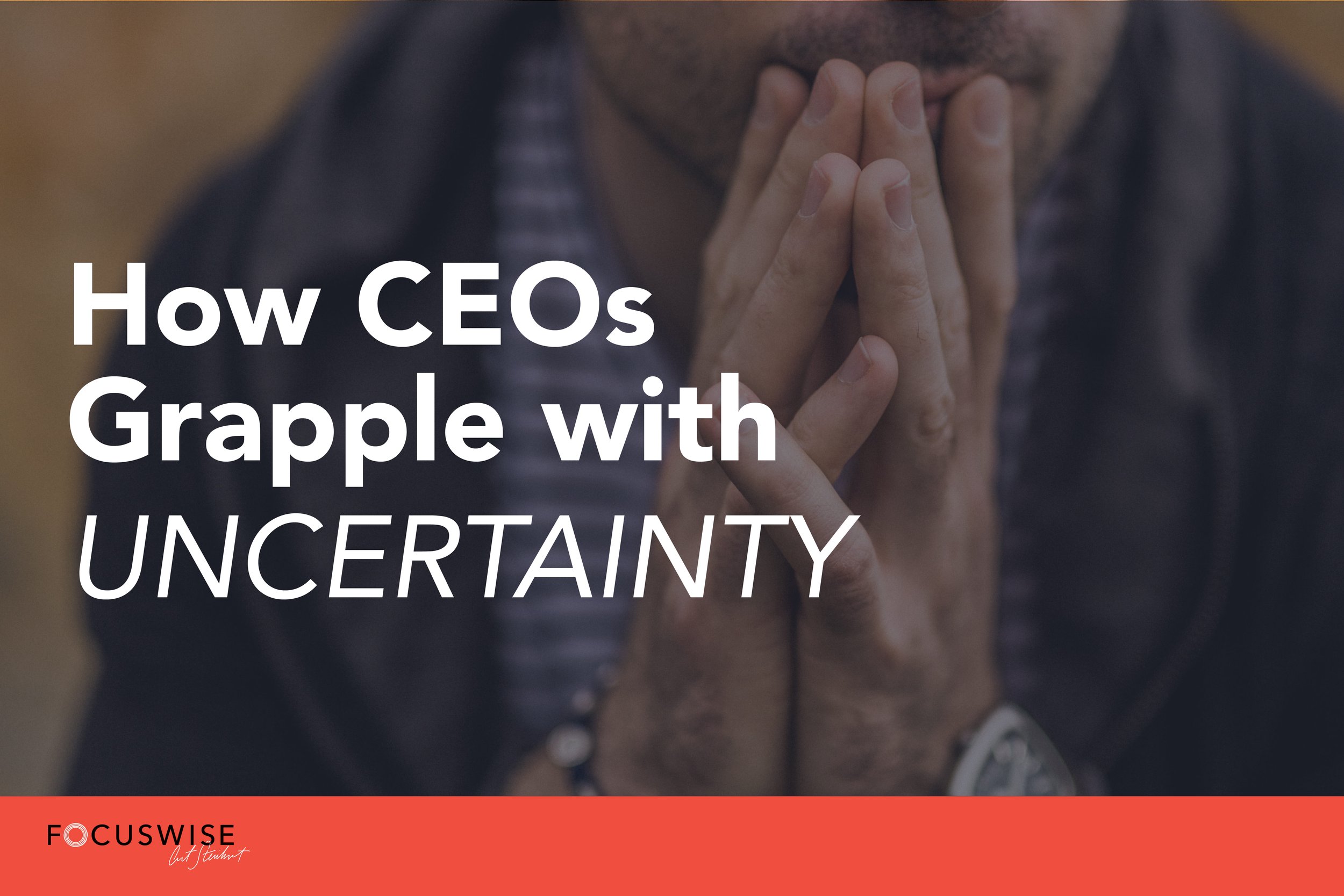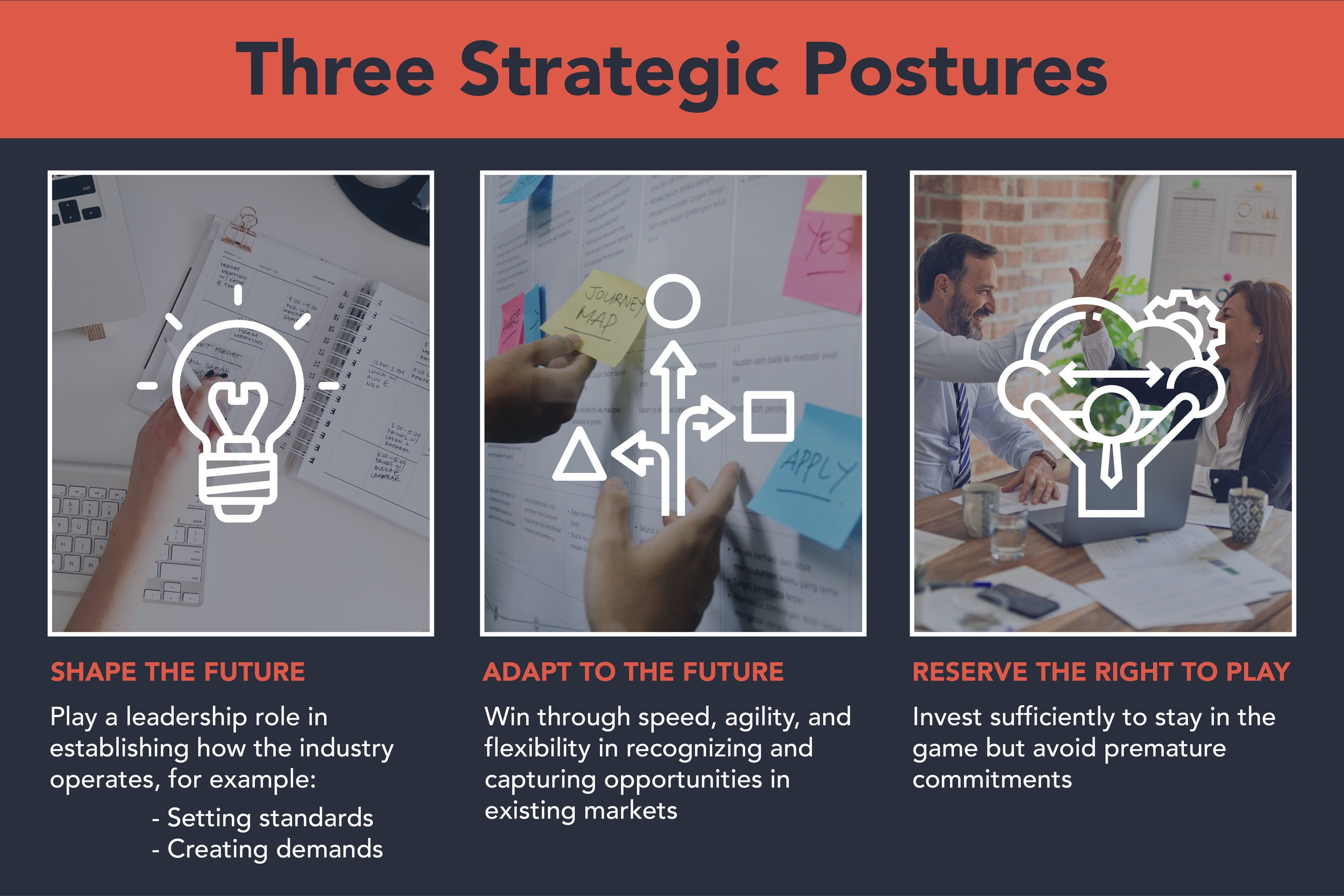How CEOs Grapple with Uncertainty
It’s hard to imagine a more comprehensive test of executive agility and vision than the massive uncertainty facing CEOs and their companies over the past few years.
The pandemic and the disruption in its wake created a universal experiment in navigation without a road map. Now, it’s easier to gain perspective and to see what leadership approaches survived the confusion of the initial phase. But at the onset, none of that seemed clear.
Although CEOs have more clarity now, they also have a slate of as-yet unanswered questions. Among them: How do top company officials lead, maintain trust, and build commitment when so much remains uncertain? How do we preserve our people’s resilience?
There are three important steps to take in the aftermath of a storm.
1. Use Values as Your Gyroscope
In times of uncertainty, lean heavily on company values. They remain constant and provide a sense of equilibrium to your workforce. When external circumstances become twisted and unexpected pressures make the road ahead unknowable, regain balance and establish immediate direction based on values that are the known constants of the organization. Whatever happens next, if CEOs make decisions and launch initiatives consistent with what the company stands for – and will stand for – they are taking one giant step in the direction of clarity and sustainability.
Tip: Visit this topic in more detail in another blog post, “People Leadership: 3 Things for CEOs to Get Right in 2023.”
2. Come to Grips with Your Personal Sense of Uncertainty
Second, it’s important that top leaders come to terms with uncertainty on a personal level. This is an executive-level adaptation of the ubiquitous airline instruction, “Put your mask on first before helping the person seated next to you.” CEOs are human, so even the most sure-footed can lose their balance while riding a global socio-economic rollercoaster. It’s natural. But with so many others depending on the leadership of a CEO, the sooner they (and other top officials) find their center, the sooner they can show everyone else how to do the same.
Along the way, these mental tactics can be of great help:
Focus-wise, concentrate your energies on dealing with what is under your control and releasing what is not.
Provide stewardship and management for whatever elements you can control, and shield your investments in (or withdraw from) areas you cannot. Pay rigorous attention to what is getting your attention, and don’t allow negativity to take much of it.Intellectually, challenge your need for certainty and learn to embrace uncertainty.
The only certainty in life is change, so it’s best to embrace it. Then, teach your workforce how to do the same. Make a concerted effort to improve their coping skills and mindfulness so they can stay focused on what the company needs them to do next.Emotionally, learn to calm your mind and body through breathing, stretching, walking, or similar activity.
Again, encourage everyone in your organization to find a physical way to settle and center their emotions. This is the surest way to avoid a hostile takeover of your staff by enemies like agitation, distress, and negativity; it is also the surest path to clear-headedness and helpful innovation.Managerially, defend your people’s confidence and well-being.
The first job of a CEO in challenging or threatening times is to let their employees see and feel their presence. Leaders must assure the troops that they are right there with them — by their side — so they don’t feel isolated or alone facing the storm. Many of the rank and file will be uncomfortable with or fear uncertainty and doubt, so leaders must shore-up that vulnerability with coping strategies that boost individual resilience.
Specifically:
Be transparent to infuse trust (e.g., “Although it’s too early to know X right now, as we have more details, we’ll share them. Meanwhile, we know that by working together and being guided by our values, we’ll come out of this strong. So together, let’s focus on Z.”)
Do not retreat to the C-suite conference room only to leave your troops without a highly visible leader. Show yourself immediately and frequently. Underscore the organizational values and purpose, define the course, encourage your people to work with confidence, and assure them they’re valued and heard by you. Presidents visit disaster sites for this same reason — it’s a model for all C-level leaders.
Then, keep your workforce busy – but not overwhelmed. Having meaningful, relevant tasks to pursue (e.g., “Let’s reach out to every customer and assure them we are here for them”) helps employees feel more in control and purposeful during turbulent times, which is the key to keeping them resilient. However, balance this against overwhelming them, which can cause burnout and resignations. Make sure line managers understand the need to keep their teams challenged without demanding more than necessary. Conserve your people’s deepest energy reserves for exigent circumstances that require hard sprints.
For more personal direction about self-management, consider these seven ways to cope with uncertainty.
3. Choose Your Go-Ahead Strategy
Fortunately, there are strategies for turbulent times that have held up over time, and CEOs are likely to find that one of them suits their circumstances. Three of them were outlined in the Harvard Business Review 25 years ago and still have enormous relevance and value.
Source: Strategic postures during uncertainty: Harvard Business Review. Graphic: Focuswise.
As I write this, the outlook for the future is still uncertain. Fortunately, the full-alert, sirens-blaring, initial alarm of the pandemic has passed, although the COVID virus in its multiple forms is still present. The economic and societal upheaval the pandemic unleashed continues to unfold. And yet, CEOs are cautiously optimistic. Whether the CEO of a specific organization sees this as the moment to pursue opportunity, adapt, or apply caution depends on the company’s position, values, and what it hopes to gain in the future.
However, Deloitte’s US CEO, Joe Ucuzoglu, had this to say recently:
“The complexity and uncertainty of the economic environment are weighing on CEOs today as they plan for the next 12-18 months while navigating a myriad of disruptive factors such as inflation and supply chain issues, talent and skills gaps, and geopolitical instability. But despite lower economic growth expectations shared by CEOs, they remain relatively optimistic about the performance outlook of their own organizations.” (Chief Executive Officer)
The CEOs and other executives with whom I consult share those concerns. (You might want to read more in my post, “CEO Concerns Heading into 2023.”) But they also have similar, carefully calculated optimism about the coming year, and each is moving forward with a strategy like those outlined in the graphic above.



